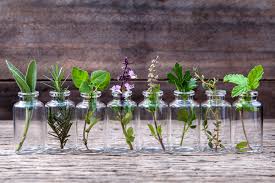






Exploring Essential Oil Activity The Conventional Way
Aromatherapy has been strongly influenced by two core issues that have been in plain sight since its modern resurgence, yet their defining character has barely been recognized.
One issue shaping aromatherapy is the apparent diversity of philosophical and scientific approaches that contribute to the healing strategies of aromatherapy, which will be discussed in detail later on.
Another is the desire to convince the medical mainstream of the benefits of essential oil treatment. To satisfy this desire, scientific explanations for physiological and pharmacological efficacy of essential oils have remained in high demand.
However, in contemporary culture, only a very narrow form of conventional pharmacological proof qualifies as valid science. This leads to unexpected questions. For example, the attempt to explain the benefits of Lavender essential oil quickly turns into an exercise in epistemology.
As we experience Lavender's outstanding capacity to heal burns, we wonder why we cannot claim this as a valid property. Then we notice that there is no research on this topic. And then we notice that the absence of research gives rise to the contention that Lavender is ineffective.
This unsatisfactory status quo is propagated as the mainstream dialogue equates reductionist chemistry and physics with science per se, ignoring other scientific approaches better suited to describing the physiological efficacy of natural extracts.
As consequence, real phenomena that evade description with the language of reductionism are ignored. It is a defining problem of conventional medicine that realities that defy reductionist interpretation are treated as nonexistent.
In silent conspiracy, the industry acts as if such phenomena simply do not exist: "It is impossible that Lavender heals burns, because there is no research."
Plants in Art and Culture
Early in the twentieth century the highly refined drawing and images of Ernst Haeckel, published under the title Art Forms In Nature, created quite a stir.
Haeckel is arguably the first artist to be inspired by and try to pay homage to the wonders of evolution.
Not even two decades later. Gattefosse published Aromatherapie, and Plants were still an important element in cultural life.
Reference:Healing Intelligence Of Essential Oils: Kurt Schnauber, P h . D .
Articles Latest
- Chamomile Roman - Chamaemelum nobile
- Chamomile Maroc - Ormenis multicaulis
- Chamomile German - Matricaria recutica
- From Biology To Aromatherapy
- Plant Messengers
- Celery Seed-Apium graveolens
- Cedarwood Virginian - Juniperus virginiana
- Cedarwood, Texas- Juniperus ashei - Essential oils
- Cedarwood Atlas- Cedrus atlantica - Essential Oils
- Cassie - Acacia Farnesiana - sweet acacia
- Cassia - Cinnamomum Cassia
- Cascarilla Bark - Croton eluteria
- Carrot Seed- Dacus Carota
- CARDAMON
- CARAWAY
- CANANGA
- CAMPHOR
- CALAMUS
- Calamintha-Calamintha officinalis
- CAJEPUT- Melaleuca cajeputi
- Plant Expression
Articles-Most Read
- Home
- Balsam Canadian - Abies balsamea
- Balsam Peru
- Copaiba Essential Oil
- North America: Tea Tree and Monarda-3
- Basil French - Ocimum basilicum
- Basil Exotic
- North America: Tea Tree and Monarda-2
- Exploring Transcultural Constants
- Thyme Essential Oil
- Balsam Tolu
- Palma Rosa
- The Bioactivity of Essential Oils
- Bay - West Indian - Pimenta racemosa
- Benzoin - Styrax benzoin
- Why Pharmacology Cannot Demonstrate Essential Oil Efficacy
- Exploring Essential Oil Activity The Conventional Way
- Complex information From Plants
- Aromatherapy: An Answer
- Contacts
